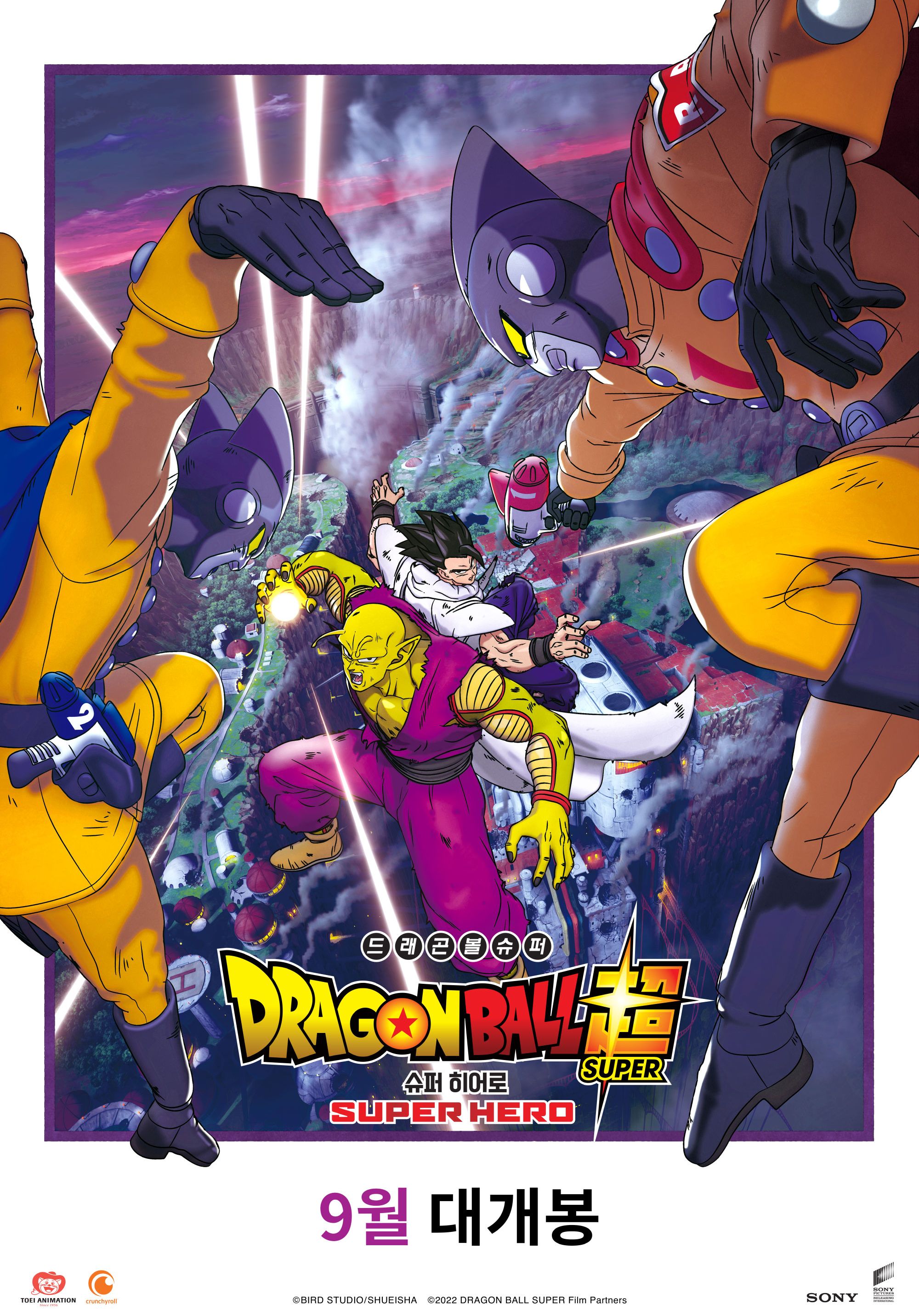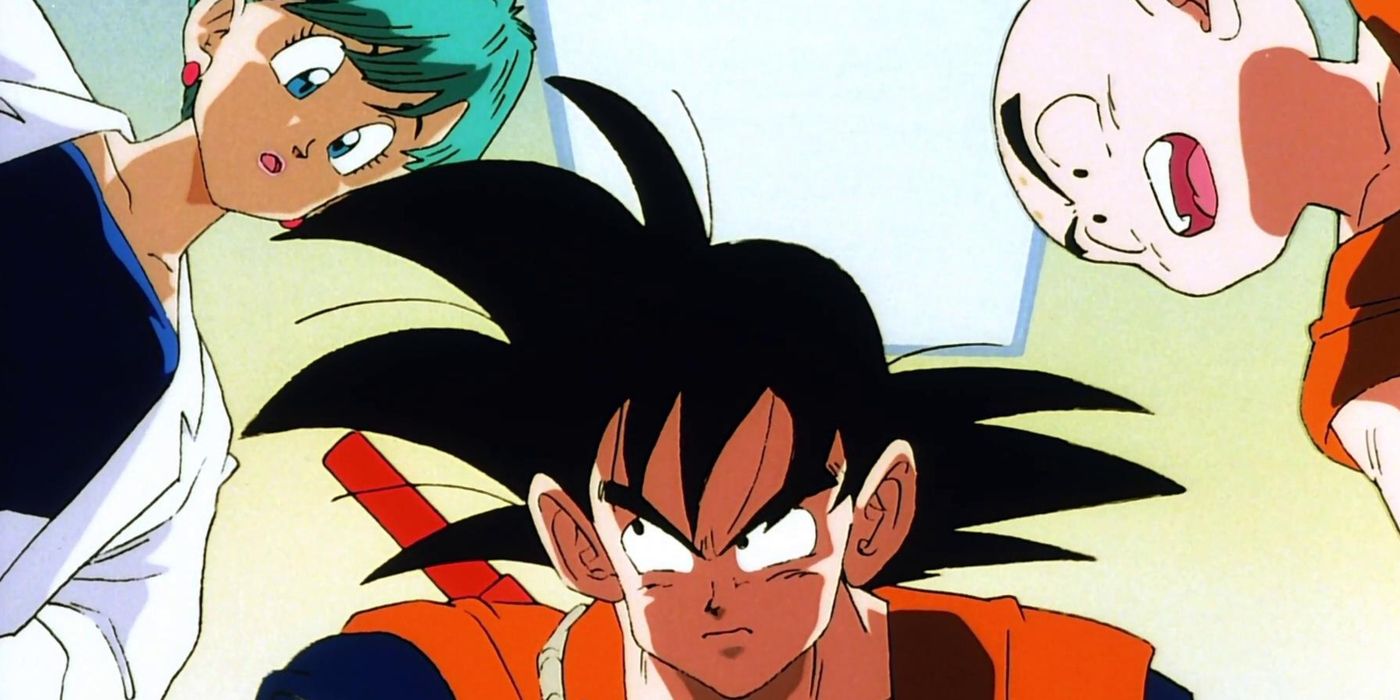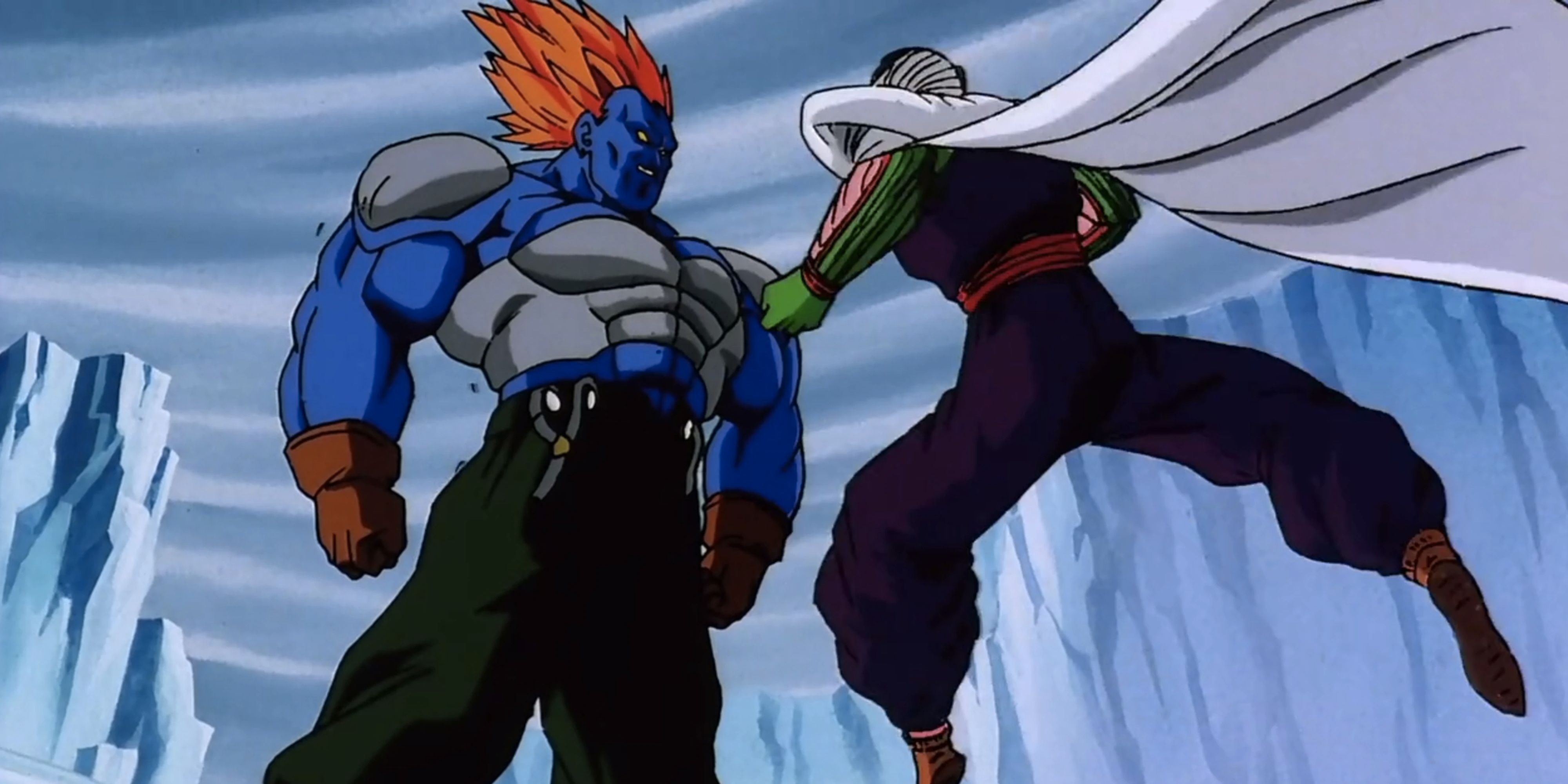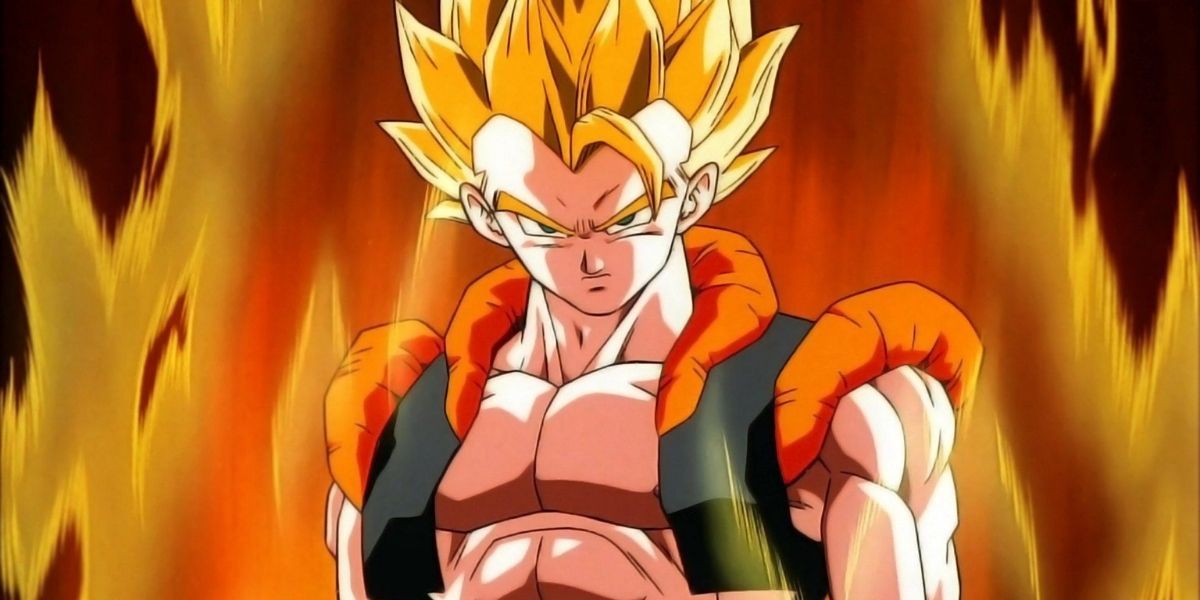The Big Picture
- Dragon Ball movies provide a more timely and compact way to deliver front-to-back stories when a villain’s threat is not big enough for a whole season.
- The movies are considered non-canon to the TV series but give fans a chance to see more of their favorite characters in fun side stories.
- While the movies have a loose connection to the series and retell stories in a condensed fashion, they enrich the Dragon Ball universe on their own.
The Dragon Ball series is one of the most popular and well-known animes of all time. The series has had enduring popularity for more than 30 years. From its origins in Japan to the American dubbed version from Funimation that countless American children grew up watching on Toonami. Dragon Ball is a classic that people still love to consume.
The television series is where most of the adventure takes place, but Dragon Ball has also brought its over-the-top power extravaganza to the big screen many times. When there’s a villain whose threat is not quite big enough to fill a season of television, a compact movie adventure can deliver a front-to-back story in a much more timely fashion.
Let’s face it, some seasons of Dragon Ball seem to go on forever. As much as we love the stories, it can be a chore to get through the whole Frieza saga. The movies deliver more of a villain-of-the-week type approach in stories that are considered non-canon to the television series, so you rarely see events in the films impact the main storylines on TV. The majority of Dragon Ball movies are just fun side stories that give us a chance to see more of our favorite characters.
They each have a loose connection to the series. The original theatrical releases in Japan coincided with where the story was in its original airing on television, usually during breaks in the TV show during spring and summer. So you see Future Trunks with the team when movies premiered during the Android and Cell sagas, or Goku in the afterlife before the Buu Saga, but you do not see the events of the films impact those stories on TV. In some cases, films simply retell stories from the series in a more condensed fashion.
It’s often difficult to place where in the timeline each of the movies takes place, but no matter where the movies fall in the mythology, they exist on their own as a way to enrich the universe.
Editor’s Note: This article was last updated on November 4, 2023.

Dragon Ball Super: Super Hero
The Red Ribbon Army from Goku’s past has returned with two new androids to challenge him and his friends.
- Release Date
- November 30, 2021
- Main Genre
- Animation
- Genres
- Animation, Action, Fantasy
Dragon Ball Movies in Order of Release Date
1986 – Curse of the Blood Rubies
1987 – Sleeping Princess in the Devil’s Castle
1988 – Mystical Adventure
1989 – Dead Zone
1990 – The World’s Strongest
1990 – The Tree of Might
1991 – Lord Slug
1991 – Cooler’s Revenge
1992 – The Return of Cooler
1992 – Super Android 13!
1993 – Broly: The Legendary Super Saiyan
1993 – Bojack Unbound
1994 – Broly – Second Coming
1994 – Bio-Broly
1995 – Fusion Reborn
1995 – Wrath of the Dragon
1996 – The Path to Power
2013 – Battle of Gods
2015 – Resurrection ‘F’
2018 – Broly
2022 – Super Hero
Dragon Ball Movies in Chronological Order
Curse of the Blood Rubies (1986)
Curse of the Blood Rubies tells a version of Goku (Masako Nozawa) and his first meeting with Bulma (Hiromi Tsuru) different from the first season of Dragon Ball. The Emperor Pilaf storyline is dropped and replaced with King Gourmeth (Shūichirō Moriyama), who seeks to gather the Dragon Balls. Goku and his new friends gather together to stop the evil king from finding the Dragon Balls first and stop his reign of evil over his kingdom.
The movie acts more as an abbreviated introduction to the series rather than a fully-formed part of the mythology. Curse of the Blood Rubies served as the first exposure of Dragon Ball to American audiences after several years of popularity in Japan. The Dragon Ball anime first began to air in America at the time of the movie’s release and helped create the dedicated audience still watching today.
The Path to Power (1996)
The Path to Power is another retelling of the origins of Dragon Ball. It borrows various elements from the first seasons of the original anime following young Goku and his friends’ first search for the Dragon Balls and facing the threat of the Red Ribbon Army.
A Path to Power was released for the 10th anniversary of the original series premiere after the conclusion of Dragon Ball Z. Due to it being a reimagining rather than an original story, the events of the movie do not fit into Dragon Ball continuity. However, it makes for a fun tribute to fans who had been watching since the original anime.
Sleeping Princess in Devil’s Castle (1987)
Goku seeks out the powerful Master Roshi (Kōhei Miyauchi) to learn martial arts skills and become a more powerful fighter. He is joined by Krillin (Mayumi Tanaka), and their new master sends his students to rescue a sleeping princess from the evil Lucifer (Nachi Nozawa) with the one who succeeds becoming Roshi’s next student. The mission proves to be more dangerous than Roshi initially thought, and it takes Goku’s every ally to face the devil himself.
As is the case with Blood Rubies, Sleeping Princess in Devil’s Castle reuses many elements from the television series while creating a new version of events. It takes place at the start of Goku and Krillin’s training ahead of the World Tournament and features an expanded version of their first assignment from Master Roshi. The expanded adventure provides a rewarding experience compared to the same arc in the series despite not being considered canon.
Mystical Adventure (1988)
Goku and Krillin attend the World’s Martial Arts Tournament hosted by Emperor Chiaotzu (Hiroko Emori). The emperor’s wife has gone missing, so he is instructed by Master Shen (Ichirō Nagai) to gather the Dragon Balls and wish for her return. However, Shen’s motivations are far more sinister. Goku must work together with friends and even former enemies to save everyone from Shen’s evil intentions.
Like its predecessors, Mystical Adventure reuses elements of the television series to construct a new story by adapting elements of the Red Ribbon Army Saga and World Tournament Saga. Its events appear to take place after Goku and Krillin’s training from Master Roshi. Mystical Adventure is a silly adventure not unlike most of the original Dragon Ball, but it delivers entertaining martial arts action and marks the end of the movie adventures of the original series.
Dead Zone (1989)
Dead Zone acts as a prelude to the Dragon Ball Z series. Young Gohan (Masako Nozawa) is kidnapped by Garlic Jr. (Akira Kamiya) who wants the Dragon Ball on Gohan’s hat to wish for immortality. Garlic Jr. sees the latent power within Gohan and decides to take the boy as a pupil rather than kill him. After he gathers the remaining Dragon Balls, Garlic Jr. summons Shenron and is granted his wish. Goku (Nozawa) and his allies must come together to stop the immortal Garlic Jr and save his son from the villain’s clutches.
Some continuity issues prevent this movie from being a fully functional prelude, but it makes for a fun warm-up adventure before the epic sagas that unfold in DBZ despite a very thin plot. This is also the only film that eventually received a follow-up in the show when Garlic Jr. returned from the dark prison he was trapped in to wreak more havoc on Earth between the Frieza and Android sagas.
The World’s Strongest (1990)
Dr. Kochin (Kouji Yada) gathers the Dragon Balls and wishes to free his master, Dr. Willow (Kōji Nakata), and his lab from a glacier. The villains believe Master Roshi is still the strongest fighter in the world, and they seek his body to implant Dr. Willow’s brain into the strongest fighter in the world to create the ultimate threat. Bulma is kidnapped to lure them in, so Goku and the Z fighters come to the rescue.
The World’s Strongest was released between episodes 39 and 40 of the series while the team is traveling to Namek before the epic Frieza Saga. Goku has King Kai’s symbol on his back which would indicate this story takes place after the battle with Vegeta, and before the journey to Namek. Like Dead Zone, the plot is thin, but the action delivers the classic DBZ thrills.
The Tree of Might (1990)
The Tree of Might adds another Saiyan to the mix when Turles (Masako Nozawa) comes to Earth with his group of space pirates to use the Tree of Might to suck all the life from the planet. The villain bears a striking resemblance to Goku and attempts to use his similarity and Saiyan lineage to bring Gohan into his group, but the boy resists. Goku comes to the rescue and his battle with Turles rages in an epic encounter.
This film was released between episodes 54 and 55 when the Z fighters were in the middle of their struggle with Frieza on Namek, so it is difficult to determine its exact placement in the timeline. Like The World’s Strongest, it seems to take place before the team travels to Namek. Of the DBZ films up to this point, The Tree of Might delivers some of the best spectacles outside the TV show.
Lord Slug (1991)
The Earth faces another threat when an ancient Super Namekian named Lord Slug (Kenji Utsumi/Yusaku Yara) comes to the planet to hijack it for its resources, but he learns about the Dragon Balls and summons Shenron (Kenji Utsumi) to wish for eternal youth. With Slug rejuvenated, he’s met by the Z fighters who must stop the evil Namekian from taking over the Earth.
Lord Slug was released between episodes 81 and 82 just as Frieza begins showing off his transformations on Planet Namek. Unofficially, it seems to take place as another adventure before the team traveled to Namek. This movie delivers perhaps the best viewing experience of the DBZ films to this point. The action is top-notch, the story is effective, and it has the bonus of being the first Funimation adaptation to use American heavy metal music such as Disturbed and Finger Eleven for its score, which adds a unique twist to the movie experience versus the TV show for those who prefer watching the American dubbed version.
Cooler’s Revenge (1991)
After Goku finally vanquishes Frieza, the villain’s brother, Cooler (Ryūsei Nakao), comes to Earth to avenge Frieza’s death. Goku is badly wounded by an ambush from Cooler’s minions, and a battle ensues with the Z fighters who must withstand Cooler’s onslaught until Gohan can obtain the badly-needed senzu beans to heal Goku before he can face off with Cooler.
Cooler’s Revenge was released between episodes 99 and 100 when the battle between Goku and Frieza was nearing its conclusion. The events seem to take place after the arrival of Future Trunks, but before the Androids emerge. It’s another villain of the week adventure with little stakes and less plot, but it’s also the first movie to feature Super Saiyan Goku in action, and the first DBZ movie to receive a direct sequel.
Super Android 13! (1992)
Dr. Gero fell to his own creations, Androids 17 and 18, but he installed his subconscious into an underground supercomputer that carried on his mission of creating an android powerful enough to kill Goku and destroy humanity. Androids 13 (Kazuyuki Sogabe), 14 (Hisao Egawa), and 15 (Toshio Kobayashi) are born and set out to bring Goku’s end in an epic battle of Super Saiyans versus androids.
This is the first DBZ confirmed to take place in a parallel universe, so the events do not fit into the main series continuity, but it does seem to take place sometime after the androids awake and before Cell has reached his perfect form. Super Android 13! marks the first movie appearance of Future Trunks (Takeshi Kusao), and it’s also the first time three Super Saiyans have all fought the same villain together.
The Return of Cooler (1992)
The planet of New Namek is in trouble after colliding with an amorphous star that drains the planet of its energy. Dende (Tomiko Suzuki) calls on Goku to rescue his people, so the Z fighters go to face the threat and rescue the Namekian people. They discover the star is attached to Meta-Cooler, a robotic upgrade of the villain dispatched in the previous movie. Goku and Vegeta (Ryo Horikawa) must put their Super Saiyan powers together for the first time to stop Meta-Cooler from destroying the entire planet.
The Return of Cooler was released between episodes 130 and 131 not long before Androids 17 and 18 emerge. Despite this, context clues put this movie after the Cell Games were announced, but before they take place. It’s the first DBZ movie to feature Vegeta and the first to take place away from Earth. It’s a marked improvement from the story of the first Cooler movie and one of the stronger DBZ movie offerings.
Broly: The Legendary Super Saiyan (1993)
Vegeta is summoned by a group of surviving Saiyans to lead a new Planet Vegeta. The Z fighters all travel to this new planet and discover not all is as it seems as they uncover a sinister attempt by Paragas (Iemasa Kayumi) to use his ultra-powerful son Broly (Bin Shimada) to take over the universe. Broly gives the Z fighters one of their biggest challenges yet with a power so great, the thought alone brings Prince Vegeta himself to his knees.
Broly: The Legendary Super Saiyan was released between episodes 176 and 177 during the Cell Games, and the events seem to take place shortly before the games begin. Broly is unquestionably the most popular character to come from a DBZ film, and this is perhaps the most well-known film of the series. Broly’s story would eventually be adapted into a theatrical film during Dragon Ball Super to make the character officially part of the Dragon Ball canon.
Bojack Unbound (1993)
The Z fighters are all participating in an intergalactic martial arts tournament, but things turn sideways when the action gets lethal at the hands of a group of mercenaries. Bojack (Tessho Genda) arrives and announces his plans to conquer the universe after being freed by the explosion of Cell on King Kai’s planet. With Goku in the afterlife, it’s up to Gohan to take down this new threat.
Bojack Unbound was released between episodes 192 and 193 after the completion of the Cell Games and fits well in the timeline here despite the return of Future Trunks with long hair. The movie works as a great final showing of young Gohan’s powers. With Goku out of the picture, Gohan and the rest of the team get to shine in the spotlight.
Broly – Second Coming (1994)
Broly makes a threatening return after surviving the events that destroyed the new Planet Vegeta. Driven by his bloodlust for Goku, Broly stalks the Z fighters to achieve his revenge. Goku is no longer among the living, so it’s up to Gohan and his brother, Goten (Masako Nozawa), to stop Broly’s immense and uncontrollable power from overcoming them.
Broly – Second Coming delivers another strong showing for the most popular villain to emerge from the movie adventures. Released between episodes 220 and 221 at the beginning of the Babadi Saga, the events of the movie fit nicely before the World Tournament Saga. It’s a worthy follow-up to the first Broly film and helped solidify his stance as a fan-favorite powerhouse.
Bio-Broly (1994)
The Broly Saga wraps up with its third film. After his defeat in Second Coming, Broly is cloned by a mad scientist to become an ultimate weapon against the Earth. The clone busts out of his confinement and mutates into a horribly deformed creature dubbed Bio-Broly. It’s up to Trunks, Goten, and Android 18 (Miki Itou) to stop the creature from breaking out of the lab and threatening all life on Earth.
Bio-Broly was released between episodes 232 and 233 which was right in the heat of the Buu Saga. It takes place after the conclusion of the World Martial Arts Tournament while the rest of the Z fighters are facing Buu, but Goku is shown in Other World at the conclusion, so the timeline is a little uncertain. It’s the first movie to not have Goku or Gohan as the central hero, so Goten and Trunks get a chance to lead their own adventure in what is, unfortunately, the weakest of the three Broly movies.
Fusion Reborn (1995)
Goku is in Other World competing in one of his favorite pastimes, a martial arts tournament. Fighters from all regions of the galaxy have come to compete, but trouble unfolds when an employee of King Yemma (Daisuke Gori) unwittingly mutates into a powerful, multidimensional being who shatters the barriers between realities. Goku’s boundaries are pushed so far beyond his limits that the only way to victory is through fusion with arch-rival Vegeta.
Fusion Reborn was released between episodes 258 and 259 around the same time Goten and Trucks master fusion to face Buu. The place in the timeline is difficult to identify, but it appears to take place just before the advent of Super Buu. The movie is most notable for introducing the result of a fusion dance between Goku and Vegeta, Gogeta, who wouldn’t be seen again until many years later in Dragon Ball Super: Broly.
Wrath of the Dragon (1995)
In the final movie treat from the initial run of DBZ, a mysterious hero is freed from a music box after an old man tricks Gohan into using the Dragon Balls, and his release will be followed by a great evil that will bring destruction to the Earth. It takes all of their cunning and the power of every Saiyan on Earth to face off against this enormous monster and save the planet from its wrath.
Wrath of the Dragon was released between episodes 270 and 271 while the team was still fending off Buu, but the events of this film take place after Buu’s defeat, even though continuity errors remain such as Shenron only granting one wish. The movie delivers another fun side adventure with one of the biggest Saiyan team-ups ever up to that point, but it somewhat undermines the epic conclusion reached at the end of the TV series after a long and illustrious run.
Battle of Gods (2013)
In an epic return to cinemas, Battle of Gods brings the biggest threat to the Earth yet when Beerus (Kōichi Yamadera), the God of Destruction, comes hunting for his new nemesis, a Super Saiyan God. As soon as Goku hears about Beerus’s unmatchable power, he can’t help but step up to the challenge of facing the god and testing his abilities. Beerus is easily offended and will destroy the planet on a whim, and Goku is the only one with a chance to fend off his evil and divine power.
Battle of Gods was the first movie released that was considered part of the official Dragon Ball canon. It serves as a sequel to the original TV series almost two decades after the conclusion of the show. It became the most successful theatrical release of any movie in the series and signaled a renewed popularity in Dragon Ball that has carried into the present day. The events of the film were adapted into the first season of Dragon Ball Super where the story was significantly expanded.
Resurrection ‘F’ (2015)
The follow-up to Battle of Gods featured the return of the original big threat of DBZ. Frieza (Ryūsei Nakao) is brought back to life and his immediate attention is to seek revenge for his defeat years ago. Goku and his friends have grown in strength tremendously since their encounter with Frieza, so the villain must exceed the power of his foe by unlocking a new and more grand transformation than any of his previous forms. Does Frieza’s new golden transformation match up with the new heights achieved by Goku?
Like Battle of Gods, Resurrection ‘F’ was considered part of the main story continuity when released, serving as a direct sequel to the prior film. It also received a major theatrical release and garnered acclaim from critics and fans alike. This film was also adapted and expanded into a season of Super, using this story as the second season before continuing on into some of the biggest stories in all of Dragon Ball in later seasons.
Broly
Super became the main continuity for a strong run of 131 episodes. Once it completed its sagas, the series moved back to the movie format for its next adventure. As the title suggests, Dragon Ball Super: Broly reintroduced the fan-favorite Legendary Super Saiyan Broly and made his story officially part of the Dragon Ball canon. Frieza recruits Broly and his father, Peragus, in his continued effort to defeat his sworn enemy in Goku.
Broly was yet another major hit in theaters upon release and delivers some of the most dazzling animation seen in Dragon Ball to date. The film also reimagined Gogeta, the fusion dance form of Goku and Vegeta from Fusion Reborn, making him part of the Dragon Ball canon as well. Broly delivers on the fan service long-time viewers have come to expect from the Dragon Ball movie experience.
Super Hero (2022)
The Super storyline continues in Dragon Ball Super: Super Hero. The movie focuses on Gohan facing a new threat of androids from the newly reformed Red Ribbon Army. The film is set in the Dragon Ball Super timeline, which means it should ideally be watched after the three immediately previous films, but it does work as a standalone watch. The movie picks up a while after Broly with the legendary Super Saiyan training under Whis alongside Goku and Vegeta. Unlike most Dragon Ball movies, the focus is not on the two main protagonists, instead following the other Z fighters and Gohan’s daughter Pan as they go up against the Red Ribbon Army. The movie is also notable for reintroducing Cell, a fan-favorite villain from Z who essentially works as Gohan’s arch-rival.
The Dragon Ball movies are available to stream on Crunchyroll in the U.S.
Source link






















